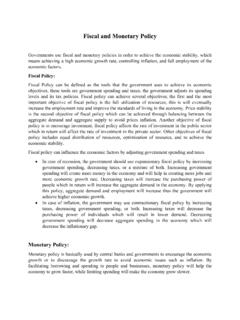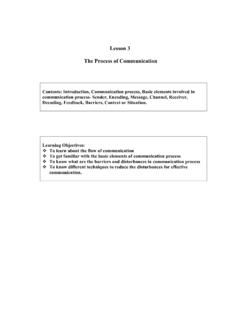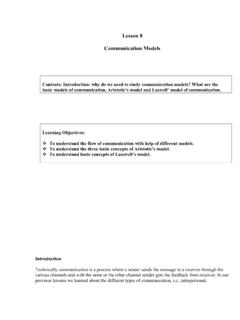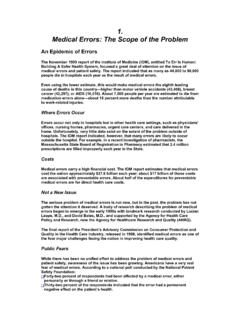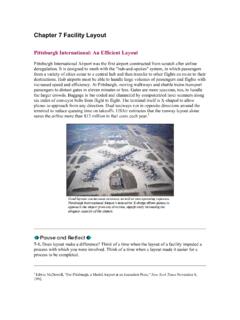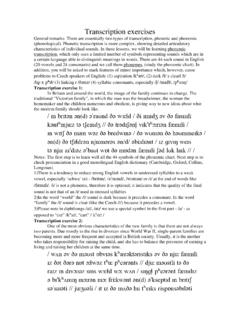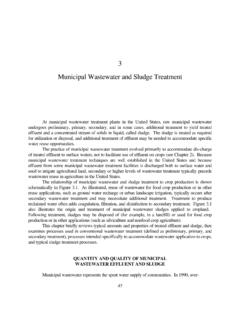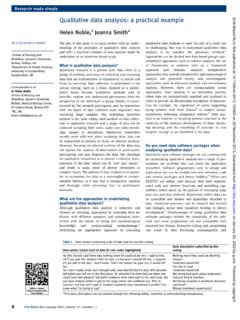Transcription of The Biopsychosocial Model of Addiction - Masaryk University
1 CHAPTER6 The Biopsychosocial Model of AddictionMonica C. Skewes*, Vivian M. Gonzalez$* University of Alaska Fairbanks, Fairbanks, AK, USA,$ University of Alaska Anchorage, Anchorage, AK, USAOUTLINEB iopsychosocial vs. Biomedical Models of Addiction 61 Conceptual Models of Addictive Behavior62 Biopsychosocial Model of Addiction62 Biological Factors and the Development ofAddictive Behaviors63 Psychosocial Factors and the Development ofAddictive Behaviors64 Risk Factors in Children64 Personality and Temperament64 Classical and Operant Conditioning64 Outcome Expectancies65 Self-efficacy66 Social Influences on Substance Use66 Families66 Peers66 Spouses and Intimate Partners67 Other Individual Difference Variables that InfluenceSubstance Use67 Ethnicity and Culture67 Gender67 Environmental Influences on Substance Use67 The Biopsychosocial Model and AddictionTreatment68 Natural Recovery68 Medication68 Psychosocial Factors in the Treatment of Addiction 69 Readiness to Change69 Self-efficacy69 Summary69 Biopsychosocial VS.
2 BIOMEDICALMODELS OF ADDICTIONThe Biopsychosocial Model of Addiction posits thatbiological/genetic, psychological, and socioculturalfactors contribute to substance use and all must be takeninto consideration in prevention and treatment Model emerged in response to criticisms of thebiomedical Model , which has historically dominatedthe field of Addiction studies. The traditional biomedicalmodel was developed and is espoused by medical scien-tists for the study of disease, and its proponents alsoview Addiction as a chronically relapsing brain diseasewith a genetic/biochemical cause. The biomedical ordisease Model of Addiction views Addiction as the mani-festation of disturbances in measurable biochemical orneurophysiological processes in the afflicted medical disease models acknowledge theinfluence of social, psychological, and behavioraldimensions of Addiction ; however, these dimensionsare viewed as relatively less important in the etiologyand treatment of Addiction .
3 The medical disease modelfavors reductionism, whereby underlying biomedicalcauses for Addiction are primarily implicated in theetiology/cause of the disorder, and mind body dualism,where the mind and the body are viewed as separateand as not significantly affecting one another. Despitewidespread favor among many scientists and healthcarepractitioners, evidence from research studies of addic-tive behaviors does not support the medical diseasemodel of Addiction ; instead, a Biopsychosocial modelthat gives equal importance to biological/genetic,psychological, and sociocultural factors better fits theavailable of Addiction , Volume 1 2013 Elsevier Inc. All rights 1977, psychiatrist George Engel authored a seminalpaper calling for the abandonment of the biomedicalmodel of illness in favor of a Biopsychosocial identified numerous problems with the biomed-ical Model that would be alleviated by the adoption ofa Biopsychosocial Model that recognizes biological,psychological, social, and cultural influences on example, the biomedical Model views biochemicalabnormalities as the cause of any illness, and positsthat correcting the biochemical abnormality will curethe illness.
4 However, in many disorders, a person mayremain ill after the biochemical abnormality has beencorrected and, conversely, a person may never becomeill even in the presence of an abnormality. For example,when infected with the virus that causes the commoncold, some research participants become ill and somedo not. The biomedical Model does not account for thefinding that, among people with similar genetic predis-positions or physiological problems, some peopledevelop an illness while others remain well. Engelsurmised that psychological and sociocultural factorsmust explain the differences in the disease state amongpeople with the same biochemical has been well established that illness is not merelythe result of biochemical dysfunction or abnormality, assome people become ill in the absence of an abnormalityor dysfunction. The effects of stress on illness have beenwell supported in the literature, as has the role of expec-tation on illness and health.
5 The placebo effect, where aninert ingredient can result in biochemical reactions forthe person who believes he or she is ingesting a drug,is evidence for the role of expectation in illness, andsupports Engel s view of a connected mind body expe-rience. There also is evidence for the importance of thepatient provider relationship in healing; if psychosocialvariables were not important, it would not make sensefor rapport building and communication between thephysician and the patient to have such strong influenceson health outcomes. Moreover, if illness is caused onlyby the existence of a physical abnormality, then it shouldbe cured by correcting the deviance, but this is notalways the case. Most illnesses, disorders, andsyndromes, including disorders of Addiction , are causedby the interaction of numerous factors biological,psychological, social, cultural, cognitive, and environ-mental. Therefore, these factors must be addressed inorder to result in a recovered MODELS OF ADDICTIVEBEHAVIORA discussion of helping and coping by Brickman andcolleagues identified four models of Addiction based onbeliefs about attributions of responsibility for acquiringthe addictive problem and the responsibility for solvingthe addictive problem.
6 The moral Model holds thatpeople who suffer from problems of Addiction areresponsible for both acquiring and solving the who become addicted are seen as morally weakwith poor willpower, and they must will their waythrough Addiction in order to recover. There is littlesupport for this Model in the literature. The enlighten- ment Model holds that the person is responsible fordeveloping the Addiction , but is not responsible forsolving the problem. The enlightenment Model isespoused by Alcoholics Anonymous and other 12-stepphilosophies, and requires people to seek recovery byturning the problem over to a higher power. Onlya higher power can cure Addiction , and it is the person stask to form and strengthen a relationship with a spiri-tual entity so that this entity can solve the addictionproblem. The medical/disease Model emerged inresponse to the moral and enlightenment models thatplaced blame on the addict for his or her problem.
7 Inthe medical Model , the addict is responsible neither forthe development of the problem nor for its Model posits a biological/genetic predispositionfor Addiction , an underlying disease process, and assumesthat the disease is progressive. The medical/diseasemodel fails to account for the finding that many peoplewith problems of Addiction do recover without profes-sional treatment. Finally, the compensatory Model holdsthat people are not responsible for developing the addic-tive problem, but are responsible for their own the compensatory Model , the role of multiple factorsin the development of addictive behavior is noted(including biological predisposition, early experiences,and social and cultural variables), and the continueduse of substances is viewed as a way to cope with these four models, the compensatory Model is themost similar to the Biopsychosocial Model OFADDICTIONS cience has not discovered a single factor that canexplain why some people are able to use substanceswithout progressing to Addiction , while others abuseor become dependent on substances.
8 Instead, the avail-able evidence suggests that biological, genetic, person-ality, psychological, cognitive, social, cultural, andenvironmental factors interact to produce the substanceuse disorder, and multiple factors must be addressed inprevention and treatment programs. The interaction ofthese factors to produce substance use problems is thecore tenet of the Biopsychosocial Model of Model is a way to understand and explain theproblem of Addiction , but has not generated testable6. THE Biopsychosocial Model OF ADDICTION62I. THE NATURE OF Addiction hypotheses as have theories of behavior change like theHealth Belief Model or the Theory of Reasoned Action/Theory of Planned Behavior (TRA/TPB). The essence ofthe Model is that the mind and the body are connectedand both the mind and the body affect the developmentand the progression of Addiction within a social andcultural context. Only by considering all of these factorscan Addiction be accurately FACTORS AND THEDEVELOPMENT OF ADDICTIVEBEHAVIORSG iven the right environment, biological and geneticpredispositions may increase the risk of substance useproblems.
9 Adoption and twin studies have found thatsubstance abuse is to some extent heritable. Male chil-dren of an alcohol-dependent parent have four timesthe risk of becoming problem drinkers compared withthe children of nondependent parents, while femalechildren of alcohol-dependent mothers evidence a three-fold greater risk. It has been reported that ofpeople with alcohol dependence had at least onealcohol-dependent parent. Among adults with alcoholdependence, 27% have alcohol-dependent fathers have alcohol-dependent mothers, compared withalcohol dependence among of fathers and ofmothers of people without alcohol dependence. Amongtwin pairs in which one twin was diagnosed withalcohol dependence, there is a significant difference inthe proband concordance rate among monozygotic( ) and dizyogtic twins ( ). Calculated herita-bility ranges from 40 90% across studies, with morechronic and severe forms of alcohol dependenceshowing greater estimates of heritability.
10 However, it isimportant to note that someone with a strong geneticpredisposition to Addiction still needs to engage insubstance use before the addictive behavior alcohol is consumed, however, children of analcohol-dependent parent experience the effects ofalcohol differently than the children of nondependentparents. For example, research on subjective experiencesof alcohol intoxication and body sway while intoxicatedfound that sons of an alcohol-dependent parent respondless intensely to moderate doses of alcohol. When giventhe same amount of alcohol as controls, sons of analcohol-dependent parent had less body sway andwere less likely to report feeling intoxicated. Follow-upstudies have found that decreased subjective intoxica-tion predicted later development of alcohol use disor-ders. Other studies have found that the children of analcohol-dependent parent are less sensitive to the negativeconsequences of alcohol, resulting in increased alcoholconsumption.
